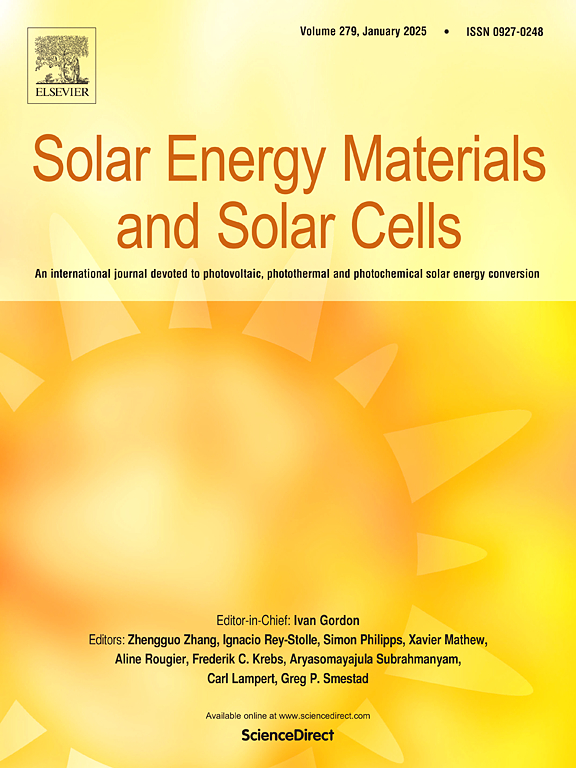A computational examination of lead free Cs2PtI6 based perovskite solar cell with investigation of several carrier transport materials
IF 6.3
2区 材料科学
Q2 ENERGY & FUELS
引用次数: 0
Abstract
The current investigation focuses on the computational analysis of the absorber layer Cs2PtI6, which is devoid of lead and possesses a low band gap of 1.37 eV. This material is attractive due to its large absorbance coefficient and non-toxic properties. Moreover, one of the most effective methods for enhancing the photovoltaic electrical properties and maximizing its outputs is the selection of more stable and superior charge transfer materials. The materials, MoS2 and WS2 were chosen as the most suitable substances for the Hole Transport Layer Material (HTLM) and Electron Transport Layer Material (ETLM) in the device. This work investigates the impact of several factors on the enhancement of a photovoltaic cell using SCAPS-1D computational software. Specifically, the research focuses on the width of the light active film, the concentration of Cs2PtI6 defect traps, the concentration of interface defect traps, the acceptor concentration (CA), influence of back contact, influence of temperature, series resistance (Rs), and shunt resistance (Rsh) and impedance spectroscopy of the Cs2PtI6 PSSC. At a temperature of 300 K, the novel configuration FTO/WS2/Cs2PtI6/MoS2/Pt attains a power conversion efficiency (PCE) of 36.60 %, an open circuit voltage (Voc) of 1.377 V, a short circuit current density (Jsc) of 30.176 mA/cm2, and a fill factor (FF) of 88.03 %, respectively. The summary of results presented here are anticipated to provide assistance and encourage researchers to manufacture this enduring lead-free perovskite solar cell promptly.
求助全文
约1分钟内获得全文
求助全文
来源期刊

Solar Energy Materials and Solar Cells
工程技术-材料科学:综合
CiteScore
12.60
自引率
11.60%
发文量
513
审稿时长
47 days
期刊介绍:
Solar Energy Materials & Solar Cells is intended as a vehicle for the dissemination of research results on materials science and technology related to photovoltaic, photothermal and photoelectrochemical solar energy conversion. Materials science is taken in the broadest possible sense and encompasses physics, chemistry, optics, materials fabrication and analysis for all types of materials.
 求助内容:
求助内容: 应助结果提醒方式:
应助结果提醒方式:


